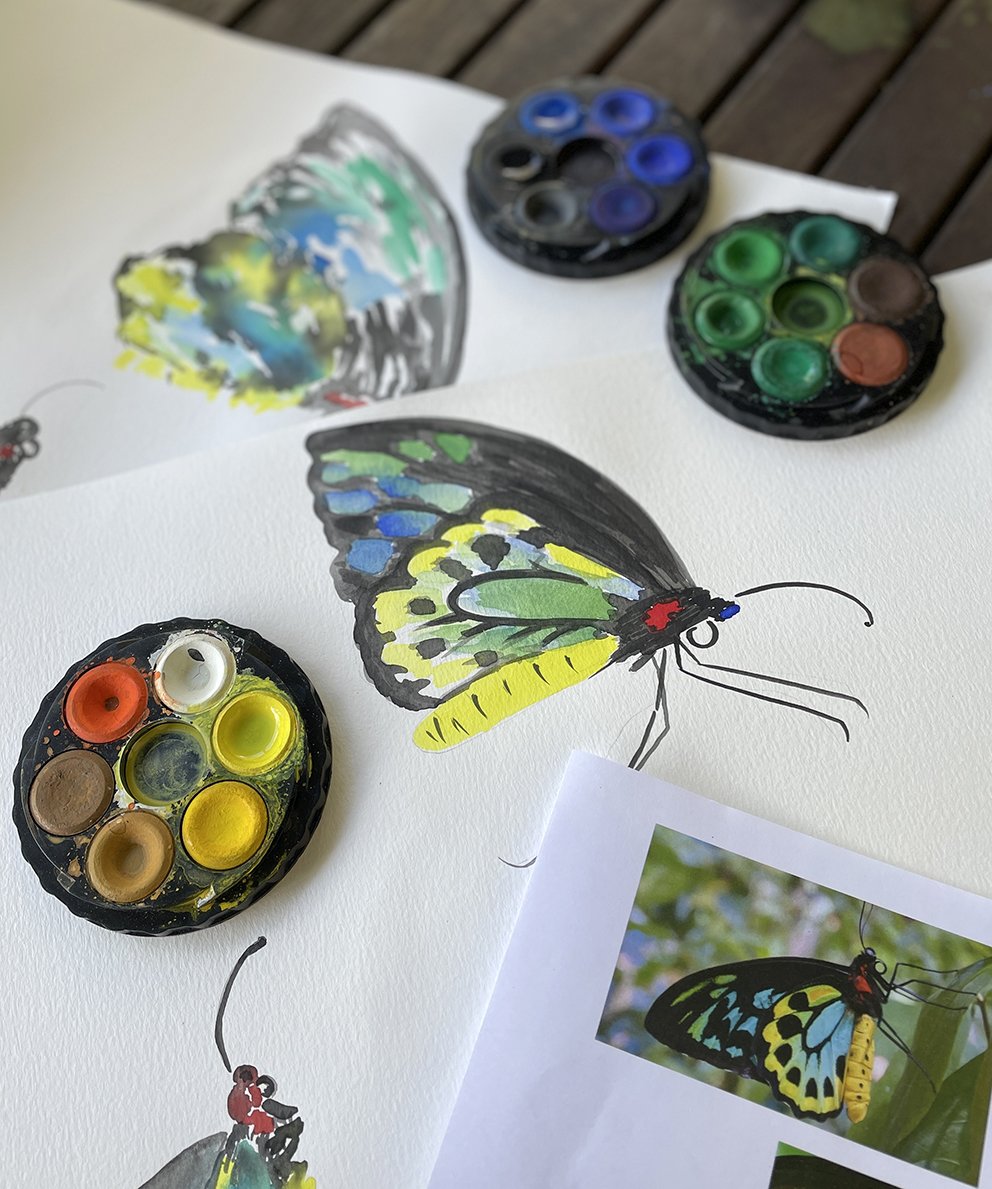Richmond Birdwing butterfly
Species Spotlight on Australia’s threatened wildlife
I love butterflies – but I’m yet to catch a glimpse of this large and spectacular example of Australia’s threatened wildlife.
The Richmond birdwing butterfly, the largest subtropical butterfly in Australia and one of Australia's largest butterflies, with a wingspan of up to 16cm in females and 13cm in males.
Males and females differ in appearance. Females have dark brown or black wings with extensive white, cream or, in the hindwing, yellowish markings. The Male definitely wins the beauty contest - the upper forewing of males is black with a distinctive iridescent green leading edge, while the upper hindwing is predominantly iridescent green with black spots.
It is protected in Queensland, where it is classified as a threatened species at risk of extinction.
Main threats are loss and fragmentation of their habitats which is mainly rainforests.
While Richmond birdwings naturally lay eggs on the two native host plant species, they are also attracted to lay on the introduced Dutchman's pipe. However, the leaves of this invasive vine are toxic and kill the larvae when they are eaten.
The larvae of the Richmond birdwing are cannibalistic and usually solitary.
An adult Richmond birdwing has a lifespan of 4 to 6 weeks. These adults feed on nectar, from blossoms of high canopy tree species and also from native and introduced flowers.
Did you know?
Butterflies are very important pollinators in our ecosystem.
Butterflies have been around for at least 50 million years and most likely first evolved some 150 million years ago.
Moths and butterflies are a very diverse group comprising over 250,000 species and make up around one quarter of all named species.
Butterflies can see red, green, and yellow.
Butterflies cannot fly if their body temperature is less than 30 degrees C.
Antarctica is the only continent on which no Lepidoptera [butterflies] have been found.
Butterflies have their skeletons on the outside of their bodies - called the exoskeleton. This protects the insect and keeps water inside their bodies so they don’t dry out.
Butterflies and moths are indicators of a healthy environment and healthy ecosystems
Butterflies cannot hear!
Butterflies use a long, tube-like tongue which is called a proboscis to eat. Working like a straw, it allows butterflies to slurp up liquids like nectar, sap and juice from rotting fruit. Hmm tasty.
There are about 400 species of butterfly which have been identified in Australia.
A group of butterflies is called a kaleidoscope.
Butterflies use their antennae to smell.
Butterflies love sunshine! They are cold-blooded and need heat to be able to move. This is why you may see them resting in the sunlight.
Butterfly wings might look lovely and smooth and silky, but they’re actually made up of tiny scales!
Butterflies don’t sleep in the same way as humans, but many types will rest in groups called ‘roosting.’
Butterflies have been widely used by ecologists as model organisms to study the impact of climate change, habitat loss and fragmentation.
Why are butterflies called butterflies? No one really knows. Some narratives suggest it's because in the Middle Ages people believed they stole milk and butter. Others imply it’s because they have yellow poo! It’s likely they were named after the creamy yellow colour of the sulphur butterflies, which commonly occur throughout Europe.
How can you help? If you’re in the Richmond Butterfly fly zone – remove any Dutchman’s Pipe vine and plant a few Richmond Birdwing Butterfly vines in your garden. You can get vine seeds from Wildlife Qld and Landcare in Qld.
A kaleidoscope of butterflies feature in some of our educational resources such as the Australian Wildlife Numbers workbook and our beautiful recycled A5 notebooks.
Richmond Birdwing practice
